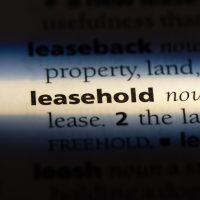
From 5 January, the stress rate for borrowers opting for a variable rate or a fixed rate less than five years will be the higher of six per cent of the pay rate, a fall from 6.5 per cent previously.
The lender described this as a “significant move” and will allow borrowers choosing a variable or shorter-term fixed rate to borrow higher amounts than before.
As an example, a typical £300,000 property with a five per cent rental yield, a basic rate taxpayer or limited company borrower can access up to £15,385 more.
Non-portfolio lending
The lender has also lowered its non-portfolio two and five-year fixed rates by up to 0.57 per cent and 0.58 per cent respectively. Rates start from 4.32 per cent and 4.5 per cent for two and five-year fixed rates.
Core and complex fixed rate products have fallen by around 0.7 per cent, with pricing beginning from 3.84 per cent for two-year fixed rates and 4.64 per cent for five-year fixed rates.
Andrew Ferguson (pictured), managing director of buy-to-let at West One Loans, said: “Landlords are becoming increasingly optimistic that rates are set to fall and so many of them are now looking to keep their options open by opting for a variable or short-term fixed rate product.
“However, the thing that is stopping many of them from proceeding is that they are not able to borrow as much as they would if they opted for a five-year fixed rate or longer, due to the fact many lenders offer a set rate to calculate affordability.”
He continued: “Our decision to lower our stress rates will give landlords the option to choose a variable or shorter-term fixed rate while still achieving the levels of leverage they need.
“The ability to choose a shorter-term rate gives landlords manoeuvrability and the option to switch into a longer-term fixed rate if and when mortgage rates fall further.
“But, as a responsible lender, we won’t do anything that puts landlords at risk, which is why we now insist on a stress rate of the higher of six per cent or pay rate. This is to ensure we continue to offer flexibility while lending responsibly.”















